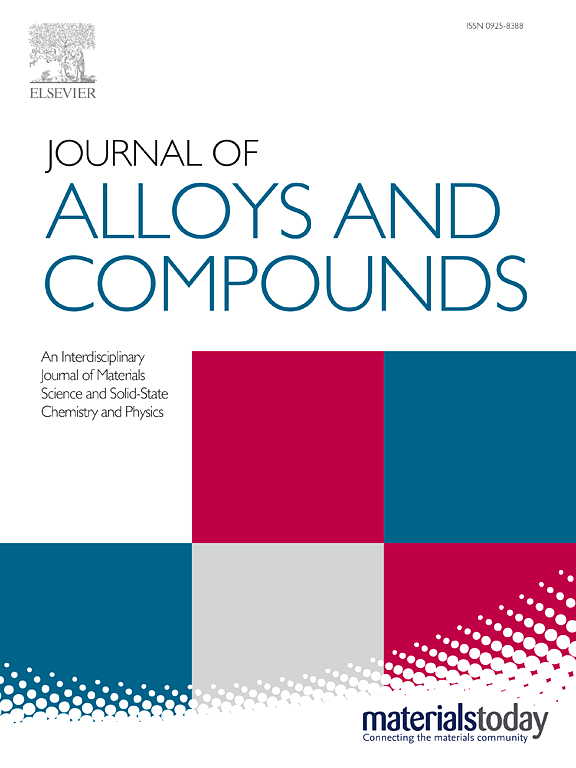负载WO₃的空心ZnS微球作为锂硫电池中硫氧化还原的双向催化剂
IF 5.8
2区 材料科学
Q2 CHEMISTRY, PHYSICAL
引用次数: 0
摘要
锂硫电池(li -硫)循环过程中多硫化物锂(LiPSs)转化动力学缓慢是制约其发展的主要问题。它经常导致产能快速衰减和低硫利用率。本研究采用简单的两步水热法制备了一种新型的含硫载体。首先,通过水热合成法制备尺寸均匀的空心ZnS微球,然后通过水热处理在分散的ZnS微球上生长片状WO3。ZnS微球可以实现LiPSs的快速转化,而WO3则可以锚定LiPSs。由于ZnS和WO3的表面协同作用,基于异质结构界面的硫主体提高了多硫化物的电导率,加速了多硫化物的反应动力学,从而提高了硫作为活性物质的利用率。基于WO₃/ZnS硫基质的锂硫电池具有良好的容量保持性和倍率性能。S@WO₃/ZnS电池在0.5℃下循环300次后保持579 mAh g⁻¹的放电容量,每次循环的容量保持率为71.2%,衰减率仅为0.095%。这种新的硫宿主具有推进锂硫电池实际应用的巨大潜力。本文章由计算机程序翻译,如有差异,请以英文原文为准。

Hollow ZnS microspheres loaded with WO₃ as a bidirectional catalyst for the redox of sulfur in Lithium-Sulfur batteries
The slow conversion kinetics of lithium polysulfides (LiPSs) during cycling in lithium-sulfur (Li-S) batteries is a major issue hindering their development. It often results in rapid capacity decay and low sulfur utilization. In this study, a novel sulfur host was fabricated through a simple two-step hydrothermal method. First, this work prepared uniformly sized hollow ZnS microspheres via hydrothermal synthesis, and then grew sheet-like WO3 on the dispersed ZnS microspheres via hydrothermal treatment. The ZnS microspheres enable the rapid conversion of LiPSs, while WO3 anchors the LiPSs. Due to the surface synergistic effect of ZnS and WO3, the sulfur host based on a heterostructure interface improves electrical conductivity and accelerates the reaction kinetics of polysulfides, thereby increasing the utilization of sulfur as the active material. The lithium-sulfur batteries based on the WO₃/ZnS sulfur host demonstrate excellent capacity retention and outstanding rate performance. S@WO₃/ZnS batteries maintain a discharge capacity of 579 mAh g⁻¹ after 300 cycles at 0.5 C, with a capacity retention rate of 71.2% and a low decay rate of only 0.095% per cycle. This new sulfur host holds great potential for advancing the practical applications of Li-S batteries.
求助全文
通过发布文献求助,成功后即可免费获取论文全文。
去求助
来源期刊

Journal of Alloys and Compounds
工程技术-材料科学:综合
CiteScore
11.10
自引率
14.50%
发文量
5146
审稿时长
67 days
期刊介绍:
The Journal of Alloys and Compounds is intended to serve as an international medium for the publication of work on solid materials comprising compounds as well as alloys. Its great strength lies in the diversity of discipline which it encompasses, drawing together results from materials science, solid-state chemistry and physics.
 求助内容:
求助内容: 应助结果提醒方式:
应助结果提醒方式:


